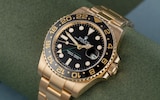A defence firm dubbed Britain’s real-life Q-branch has taken a key role in America’s war on drugs, deploying a fleet of radar-equipped blimps that scan for border incursions.
QinetiQ, the FTSE 250 defence company, is managing the airship-like craft which is deployed at intervals along the 2,000 mile stretch between Arizona and Florida.
The blimps can ascend to altitudes of up to 15,000 feet, with a viewing range of 200 miles allowing them to more easily spot the low flying planes and speed boats favoured by drug runners.
QinetiQ was awarded the $170m (£133m) Tethered Aerostat Radar System (TARS) contract by the US Department of Homeland Security last November, taking over responsibility for the network of eight blimps and ground stations and more than 200 employees.
The TARS fleet was first deployed in the 1980s, when drugs and contraband were typically carried aboard planes landing on dirt runways in an estimated 8,500 illegal flights a year.
More than 500 aircraft were seized by Mexican authorities from drug kingpin Joaquin “El Chappo” Guzman alone, most of them innocuous looking Cessna aircraft, popular because they could operate from a 900-foot airstrip and featured double doors for quick unloading.
The TARS balloons, known as aerostats, helped US officers intercept planes or boats illicitly entering US territory and to anticipate where gangs might cross the border from planes landing on makeshift runways still inside Mexico.
Today, flows of cocaine, heroin, marijuana and methamphetamine have been joined by fentanyl, the synthetic opioid 100 times more potent than morphine that’s spawned a new US drugs crisis, with more than 70,000 overdose deaths reported in 2022.
The Drug Enforcement Administration last year seized a record 79.5 million fentanyl pills and more than five tons of fentanyl powder.
The task facing QinetiQ and the air and marine arm of Customs and Border Protection, which operates the aerostats, has become even more demanding with the advent of cheap but durable drones.
Jonathan Riksen, executive vice president at QinetiQ, said: “A drone is obviously much smaller than an aircraft. That’s problematic because not only is it harder to detect, but it can look like a goose or some other larger bird in terms of its radar returns.”
High-altitude radars are far more effective in identifying targets because they render the background flat, Mr Riksen said, whereas ground-based scans can suffer distortion when an object is viewed against a mountainside or forest.
So acute are the TARS radars that they can even spot a drone’s spinning blades, he said.
Their accuracy is especially vital now that the conflicts in Ukraine and the Middle East have revealed the potential for drones to be deployed as frontline weapons.
Poland last month signed a $1bn (£790m) deal with the US for four aerostats that will be used to scan its eastern border for missiles, aircraft, drones and seaborne incursions, and Mr Riksen said the remit of the TARS also includes the detection of potential hostile drone threats.
Diesel-powered blimps like those deployed by QinetiQ can stay aloft for as long as a week before they need refuelling, making them ideal for what’s known as persistent surveillance, though extreme weather can force them to be grounded.
Each balloon is moored with a nylon fibre cable, and raised and lowered with a powered winch. TARS operates from six sites along the US-Mexico border, one that scans the Florida Straits, and another in Puerto Rico, monitoring the north Caribbean area.
QinetiQ was created in 2001 out of the Defence Evaluation and Research Agency, Britain’s largest science and technology organisation and itself formed out of a number of government bodies that had their origins in the Cold War.
The firm’s name has been taken to be a reference to Q Branch, the fictional MI6 department tasked with developing spy gadgets and weapons in the James Bond films.
The company said in a trading update last month it had identified opportunities to grow the value of the five-year TARS contract by 50pc.
Disclaimer: The copyright of this article belongs to the original author. Reposting this article is solely for the purpose of information dissemination and does not constitute any investment advice. If there is any infringement, please contact us immediately. We will make corrections or deletions as necessary. Thank you.



